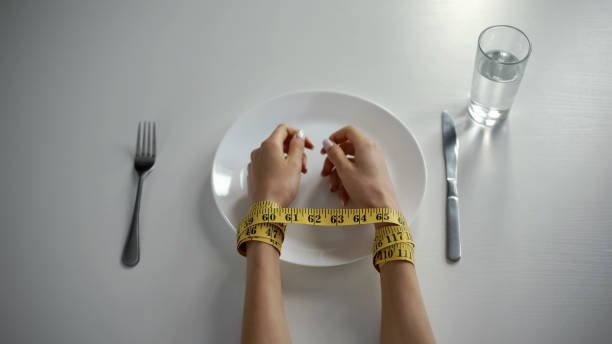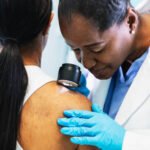In a society that idolizes thinness, filters, and “wellness culture,” it’s no surprise that many people develop unhealthy and painful relationships with food and body image.
But eating disorders are not fads or lifestyle choices — they are complex mental illnesses that affect both the mind and the body. They distort how a person sees themselves, how they value their body, and how they engage with eating and nourishment. 😔🍴
From restricting food to compulsive bingeing to purging, these disorders impact millions of people — regardless of gender, age, race, or background. Let’s take a deep, updated look into Anorexia Nervosa, Bulimia Nervosa, and Binge Eating Disorder (BED) — what they are, why they matter, and how recovery is more possible than ever in 2025.
📌 What Are Eating Disorders?
Eating disorders (EDs) are mental health conditions with serious physical consequences. They’re characterized by:
- Persistent disturbances in eating behaviors
- Extreme concern with body weight, shape, or size
- Emotional distress and compulsive behaviors related to food
Though often invisible from the outside, eating disorders can be life-threatening and severely impact someone’s mental, physical, and social wellbeing.
📊 Fast Facts (2025 Data):
- Over 30 million people in the U.S. alone suffer from an eating disorder
- BED is the most common, followed by bulimia and anorexia
- Eating disorders affect all genders, but are most common in females aged 12–25
- LGBTQ+ youth are twice as likely to develop EDs
- Social media exposure has significantly increased ED symptoms among teens and young adults
🥗 1. Anorexia Nervosa: The Illusion of Control
Anorexia Nervosa is more than skipping meals — it’s a dangerous obsession with thinness, control, and a distorted body image. People with anorexia often see themselves as overweight, even when they are dangerously underweight.
🔍 Symptoms:
- Extreme restriction of food intake
- Intense fear of gaining weight
- Preoccupation with calories, diet rules, or “clean eating”
- Rapid weight loss or failure to gain expected weight in teens
- Fatigue, hair loss, dry skin, missed menstrual cycles
- Social withdrawal and denial of hunger
⚠️ Medical Risks:
- Heart failure, low blood pressure
- Osteoporosis, brittle bones
- Amenorrhea (loss of periods)
- Electrolyte imbalances
- Organ shutdown and death
💡 2025 Innovations:
- Neuroimaging shows structural brain changes linked to anorexia
- Ketamine-assisted psychotherapy is being tested for chronic, treatment-resistant cases
- Hormone-based treatments to reverse bone loss in young women
🍩 2. Bulimia Nervosa: Trapped in a Cycle
Bulimia Nervosa is marked by repeated binge-eating episodes, followed by compensatory behaviors like vomiting, fasting, or excessive exercise to “undo” the eating.
What sets bulimia apart is the internal shame and secrecy—people often maintain a “normal” weight, making it harder to detect.
🔍 Symptoms:
- Frequent, uncontrollable binge eating
- Vomiting or laxative use after meals
- Feeling out of control while eating
- Swollen face or cheeks
- Tooth enamel erosion, gum disease
- Mood swings, perfectionism, impulsivity
⚠️ Health Complications:
- Esophageal tears, acid reflux
- Heart arrhythmias due to electrolyte loss
- Infertility, hormonal issues
- Long-term digestive damage
- Emotional instability and depression
💡 2025 Innovations:
- Digital Cognitive Behavioral Therapy (CBT) now available with live coaching
- AI-based binge tracking apps help identify triggers and prevent cycles
- Zonisamide and lisdexamfetamine (Vyvanse) being studied for binge/purge suppression
🍟 3. Binge Eating Disorder (BED): The Hidden Struggle
Binge Eating Disorder involves recurrent episodes of eating large amounts of food, often in isolation, and without purging. It’s the most common ED in the world, yet still heavily stigmatized.
🔍 Symptoms:
- Eating large quantities in a short time
- Feeling “out of control” during binges
- Hiding food or eating in secret
- Eating when not hungry
- Intense guilt or self-disgust after episodes
- Weight gain or fluctuation
⚠️ Health Consequences:
- Obesity, high cholesterol, Type 2 diabetes
- Sleep apnea, joint problems
- Depression, low self-esteem
- Chronic dieting without success
- Increased risk of substance use disorders
💡 2025 Innovations:
- GLP-1 drugs (e.g., Wegovy, Zepbound) reduce cravings and binge urges
- Emotional regulation therapies and trauma-informed care now widely integrated
- New body-neutrality approaches in recovery programs 🧘♀️
🧠 What Causes Eating Disorders?
Eating disorders don’t come from vanity or attention-seeking. They are the result of a complex interplay of factors:
🔗 Biological:
- Family history or genetic predisposition
- Hormonal or neurotransmitter imbalances (e.g., serotonin, dopamine)
🔗 Psychological:
- Low self-esteem
- Anxiety, depression, OCD
- Trauma or abuse
- Perfectionism or fear of failure
🔗 Social/Cultural:
- Toxic beauty standards & body shaming
- Diet culture, especially among teens
- Pressure from social media filters & influencers
- Weight stigma in healthcare and media
💡 2025 Note: Social media detox programs and “Instagram reality” therapy are emerging tools in modern treatment centers.
🩺 Diagnosis & Treatment: A Path to Healing
Early detection and multi-disciplinary care are key.
✅ Diagnosis Includes:
- Clinical interviews
- Nutritional assessments
- Physical exams & labs
- Psychological screening (e.g., EDE-Q, PHQ-9)
🛠️ Treatment Approaches (2025):
| Modality | Purpose |
|---|---|
| CBT-E (Enhanced Cognitive Behavioral Therapy) | Challenges food/weight thoughts and builds coping skills |
| Family-Based Therapy (FBT) | Especially effective in teens, involves caregivers actively |
| Medication | SSRIs, stimulants, antiepileptics (varies by diagnosis) |
| Group therapy & peer support | Builds community, reduces shame |
| Nutritional Rehab | Guided refeeding and meal planning with a dietitian |
| Body image reprocessing therapy | Uses mirror exposure, VR, and mindfulness |
📱 Telehealth & app-based support are now widely accepted and used in recovery.
📱 Social Media, Diet Culture & Filters: A New Epidemic
Platforms like TikTok and Instagram can fuel comparison, perfectionism, and body dysmorphia, especially among teens.
But they can also be a force for GOOD:
- Recovery influencers who promote body neutrality & self-compassion
- Mental health professionals sharing evidence-based tips
- Anti-diet culture and intuitive eating movements 🌈
Curate your feed for healing, not harm.
💬 Supporting Someone with an Eating Disorder
If someone you care about is struggling:
- Don’t comment on their weight, shape, or food
- Offer non-judgmental listening
- Encourage professional help
- Avoid “diet talk” or body-shaming language
- Set boundaries and get support for yourself too 💙
🚨 When to Get Help
Seek professional help if you notice:
- Drastic changes in weight or eating
- Obsession with “clean” or “perfect” eating
- Isolation during meals or after eating
- Anxiety or guilt surrounding food
- Frequent health complaints (e.g., stomach pain, dizziness)
📚 Resources (2025 Edition):
- National Eating Disorders Association (NEDA) – nationaleatingdisorders.org
- Project HEAL – Free treatment scholarships & community
- Eating Recovery Center – Virtual & in-person programs
- Intuitive Eating Network – Anti-diet, body-positive resources
- Crisis Text Line – Text “NEDA” to 741741







Leave a Reply